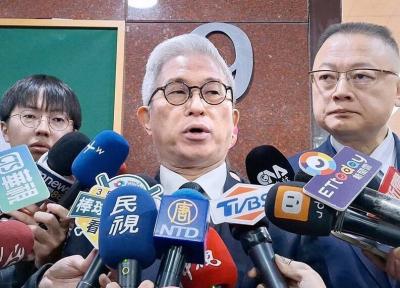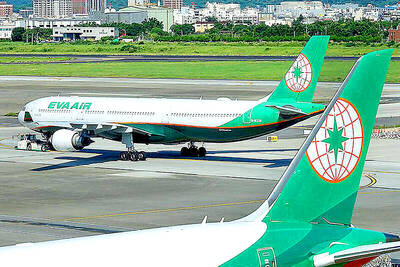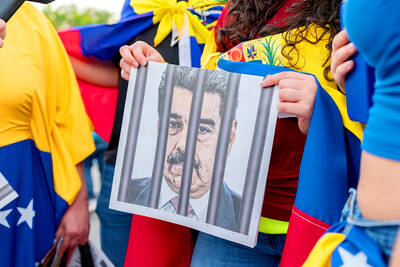A high school’s annual student trips to Japan has led to the donation of a bust of Japanese medical pioneer Tomoe Takagi cast by Taiwanese sculptor Huang Tu-shui (黃土水).
Huang, whose most famous work, Water Buffaloes (水牛群像), in 2009 became the first 20th century artifact to be deemed a national treasure — was the first Taiwanese to study art in Japan.
He inspired painter Cheng Cheng-po (陳澄波) to study in Japan as well, and influenced the works of sculptors Yang Ying-feng (楊英風) and Ju Ming (朱銘).
The bust of Takagi, completed in 1929, was one of the last pieces Huang created before his death in 1930.
In 1919, then-Japanese governor-general of Taiwan Motojiro Akashi asked Takagi to serve as the first president of what later became Taiwan Power Co.
When Takagi’s term ended and he returned to Tokyo in 1929, the organization’s employees commissioned Huang to create a bronze bust of Takagi as a sign of respect.
When National Changhua Senior High School began organizing annual trips to Japan in 2010, students were conducting research on Lai Ho (賴和) — the father of modern Taiwanese literature — and they discovered that Lai had written Takagi’s name in an unpublished manuscript, head librarian Lu Hsing-chung (呂興忠) said.
The manuscript expressed Lai’s admiration for Takagi, who was an expert on infectious diseases and was in 1920 invited by Shinpei Goto, head of civilian affairs in the Japanese colonial-era government, to fight a plague in Taiwan, Lu said.
Takagi also served as president of the Japanese colonial-era Taiwan Sotokufu Medical School, which later became National Taiwan University’s College of Medicine, he said.
Takagi’s students included Lai, Tu Tsung-ming (杜聰明), Lee Cheng-yuan (李鎮源) and other Taiwanese pioneers in the field of medicine, he added.
Lu said that as most of Lai’s writings were “colonial protest literature,” the hint that he might have admired a Japanese official stationed in Taiwan inspired him and his students to conduct further research.
In 2011, Lu and his students visited Takagi’s grandson in Tokyo, where they were surprised to find in his home the bronze bust of Takagi cast by Huang.
After Takagi’s grandson died in 2013, his widow decided to dispose of Takagi’s belongings, including the bust.
Private collectors, art museums and universities in Taiwan and Japan began competing for the bust, with Tainan’s Chimei Museum in 2014 offering NT$35 million (US$1.18 million at the current exchange rate) for it, sources said.
Lu and his students returned to Tokyo in 2014 to visit the widow, who they persuaded to donate the bust, several photographs of Aboriginal communities and other historical materials to the school.
The school has created a museum to house the artifacts and plans to invite the widow to cut the ribbon at the opening ceremony later this year.

A strong continental cold air mass is to bring pollutants to Taiwan from tomorrow, the Ministry of Environment said today, as it issued an “orange” air quality alert for most of the country. All of Taiwan except for Hualien and Taitung counties is to be under an “orange” air quality alert tomorrow, indicating air quality that is unhealthy for sensitive groups. In China, areas from Shandong to Shanghai have been enveloped in haze since Saturday, the ministry said in a news release. Yesterday, hourly concentrations of PM2.5 in these areas ranged from 65 to 160 micrograms per cubic meter (mg/m³), and pollutants were

Taiwan’s armed forces have established response protocols for a wide range of sudden contingencies, including the “Wan Chun Plan” to protect the head of state, the Ministry of Defense (MND) said today. After US President Donald Trump on Saturday launched a series of airstrikes in Venezuela and kidnapped Venezuelan President Nicolas Maduro, concerns have been raised as to whether China would launch a similar “decapitation strike” on Taiwan. The armed forces regularly coordinate with relevant agencies and practice drills to ensure preparedness for a wide range of scenarios, Vice Minister of National Defense Hsu Szu-chien (徐斯儉) told reporters before a

EVA Airways on Saturday said that it had suspended a pilot and opened an investigation after he allegedly lost his temper and punched the first officer several times as their plane was taxiing before takeoff at Los Angeles International Airport. According to a report published on Thursday by The Reporter, the incident occurred after the flight’s Malaysian first officer tried to warn the Taiwanese pilot, surnamed Wen (文), that he was taxiing faster than the speed limit of 30 knots (55.6kph). After alerting the pilot several times without response, the first officer manually applied the brakes in accordance with standard operating

NOT AN OPENING: Trump’s violation of international law does not affect China’s consideration in attacking Taiwan; Beijing lacks capability, not precedent, an official said Taiwanese officials see the US’ capture of the president of Venezuela as a powerful deterrent to Beijing’s aggression and a timely reminder of the US’ ability to defeat militaries equipped with Chinese-made weapons. The strikes that toppled Venezuelan President Nicolas Maduro signaled to authoritarian leaders, including Chinese President Xi Jinping (習近平), US President Donald Trump’s willingness to use military might for international affairs core to US interests, one senior official in Taipei’s security circle said. That reassured Taiwan, the person said. Taipei has also dismissed the idea that Trump’s apparent violation of international law could embolden Beijing, said the official, who was not